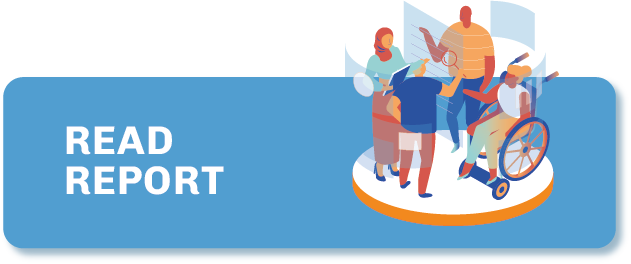Italy
Established print and broadcast media organisations dominate the digital news sector in Italy. However, over the last decade an increasing number of independent digital native publications has emerged. These tend to offer new languages and techniques to audiences, and usually have one or more specialities. The digital native media outlets surveyed aim to build a community of readers willing to support their projects. Grants are their main source of revenue.
GENERAL INFORMATION
Press
freedom
ranking
Internet
penetration
POPULATION
Media organisations
in the Directory
TYPE OF COVERAGE

TYPE OF ORGANISATION

GENDER OF FOUNDERS

Press freedom
Italian journalists enjoy a “climate of freedom” for the most part, notes Reporters Without Borders. Nevertheless, 20 journalists are under round-the-clock police protection at the time of writing due to their investigations into organised crime, according to the country’s Ministry of the Interior. Furthermore, defamation lawsuits are widely used as a tool to intimidate the media, as noted by media rights groups such as the Resource Centre on Media Freedom in Europe and Reporters Without Borders. The industry has also been the target of verbal and physical attacks by extremist and protest groups during the Covid-19 pandemic.
Market structure and dominance
Italy has historically had a high concentration of media ownership – notably in the audiovisual sector – despite media-specific rules to safeguard media pluralism, notes the Centre for Media Pluralism and Media Freedom’s Monitoring Media Pluralism in the Digital Era (MPM 2022) report. Legacy media outlets dominate both the online and offline news markets. Digital disruption has been slower in Italy compared with other media systems in Europe, according to the Reuters Institute’s Digital News Report 2022. TV is still the most-used source of information across all age groups, according to Eurobarometer 2022.
How media is funded The state owns one public service broadcaster, RAI. Public subsidies are regulated by law, but these are minimal. The news industry is therefore deeply dependent on advertising revenue. For years, the print sector has faced an economic crisis due to an enduring decline in sales and a consequent shift of advertising investment towards either the audiovisual or digital sectors, as noted in the Centre for Media Pluralism and Media Freedom’s report. Memberships and subscriptions are emerging sources of revenue.
Twenty-three profiles of digital native media organisations from Italy are included in the directory. Among those interviewed, there is a common feeling that these outlets fill a void in the national media landscape. In most cases, they aim to offer unbiased explanatory journalism about one or more topics, the most common being politics, foreign affairs and human rights. In some cases, newsrooms master a specific technique, such as data journalism or fact-checking. Interestingly, all media founders coming from academia share the mission of spreading their knowledge outside their niche. The publication inGenere, an economic magazine with a gender perspective, wants to make visible the opinions of high-profile female academics who are “ignored by mainstream media”, as its editor-in-chief Barbara Leda Kenny explains. According to the Centre for Media Pluralism and Media Freedom’s report, in Italy most media leaders are men, and digital media leaders are no exception.
The oldest digital native publication was set up in 1998, and these interviews suggest that civil society organisations have pioneered the independent digital native media sector in Italy. The reasons for this are multifold. For one thing, the foundation of the first Independent Media Centre collectives – better known as Indymedia – led to a copycat effect in Italy, with two interviewees citing Indymedia as a source of inspiration. In addition, Italian legacy media outlets tend to limit foreign coverage to a few countries, namely the United States, the United Kingdom and some European countries, notes non-profit organisation COSPE in its 2022 report on foreign news coverage in Italy. In contrast to this, several digital native media leaders state that they report “from all over the world as a mission”.
The digital native outlets surveyed for Project Oasis have been online for 10 years on average, and these interviews suggest that the growth of the sector has gone hand-in-hand with the spread of social media platforms in Italy. But today, most media leaders want to get rid of such platforms for news distribution, and use newsletters and messaging services more widely instead. Some digital native media outlet leaders have also started print publications, in order to have an additional source of revenue. As Christian Elia, co-founder of the narrative journalism digital magazine Q Code, puts it: “People are willing to pay only if they get something concrete.”
Many media leaders claim to be “proudly ad-free”. Grants are therefore an essential source of revenue for the bulk of media outlets surveyed. Some media organisations have launched membership programmes, but only a few have a paywall. “Readers should donate because they feel they are part of a community, not because they are forced to do it,” says Alberto Puliafito, co-founder of the multimedia publication Slow News. Perhaps surprisingly, the pandemic likely had a positive rather than a negative impact on the media outlets surveyed. Some publications received Covid-19 relief grants either from the European Union or the European Journalism Centre, while others were founded during the pandemic lockdowns.
Interviews with Italian digital native media outlets were carried out between July and September 2022. The findings of these are in line with those of the Reuters Institute’s Digital News Report 2022 – digital native media outlets in Italy tend to focus on what they perceive as overlooked topics by legacy media organisations. Rather than acting as a hurdle, being a niche publication gives these outlets the opportunity to create communities of trust. The interviews also confirm that a culture of transparency is lacking in Italy – most media outlets surveyed do not find it important to publish information about their ownership or financial data.
Last updated: December 2022
CREDIT FOR STATISTICS: Press Freedom statistics, RSF Press Freedom Index 2022; Internet penetration and population statistics, from Internet World Stats

